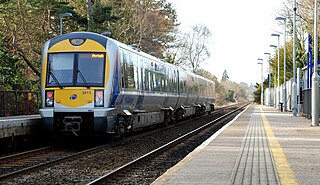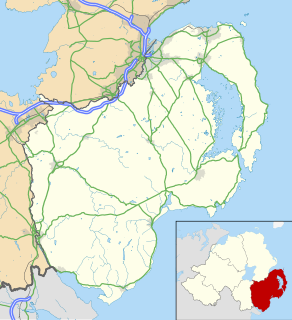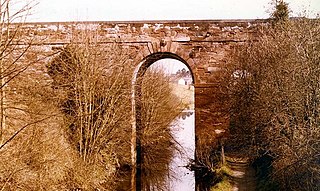Killeaton
| |
|---|---|
| County | |
| Country | Northern Ireland |
| Sovereign state | United Kingdom |
| Police | Northern Ireland |
| Fire | Northern Ireland |
| Ambulance | Northern Ireland |
| EU Parliament | Northern Ireland |
Killeaton (from Irish : Coill Eatain, meaning "Eaton's wood") [1] is a townland of 238 acres in County Antrim, Northern Ireland, close to Belfast. It is situated in the civil parish of Derriaghy and the historic Barony of Belfast Upper. [2]

Irish is a Goidelic (Gaelic) language originating in Ireland and historically spoken by the Irish people. Irish is spoken as a first language in substantial areas of counties Galway, Kerry, Cork and Donegal, smaller areas of Waterford, Mayo and Meath, and a few other locations, and as a second language by a larger group of non-habitual speakers across the country.
A townland is a small geographical division of land used in Ireland. The townland system is of Gaelic origin, pre-dating the Norman invasion, and most have names of Irish Gaelic origin. However, some townland names and boundaries come from Norman manors, plantation divisions, or later creations of the Ordnance Survey. The total number of inhabited townlands was 60,679 in 1911. The total number recognised by the Irish Place Names database as of 2014 was 61,098, including uninhabited townlands, mainly small islands.

County Antrim is one of six counties that form Northern Ireland. Adjoined to the north-east shore of Lough Neagh, the county covers an area of 3,046 square kilometres (1,176 sq mi) and has a population of about 618,000. County Antrim has a population density of 203 people per square kilometre or 526 people per square mile. It is also one of the thirty-two traditional counties of Ireland, as well as part of the historic province of Ulster.
The Killeaton housing estate was built in the 1950s by Messrs. J. F. McCall & Sons. [3] Although in more recent years new houses have been built in the area, such as Queensway Park, Killeaton Place and the Rose Gardens. In June 2012, severe flooding following torrential rain, left 80 homes under 4 ft of water in Killeaton and residents having to be rescued by boat. [4] [5]
Killeaton is also adjacent to Dunmurry Industrial Estate, the location of the DeLorean Motor Company factory, where the DeLorean DMC-12 was manufactured from 1981 until production ended in 1982. It was famously featured in the Back to the Future movie trilogy.
The DeLorean Motor Company (DMC) was an American automobile manufacturer originally formed by automobile industry executive John DeLorean in 1975. It is remembered for the one model it produced — the stainless steel DeLorean sports car featuring gull-wing doors—and for its brief and turbulent history, ending in receivership and bankruptcy in 1982. Near the end, in a desperate attempt to raise the funds his company needed to survive, John DeLorean was filmed appearing to accept money to take part in drug trafficking, but was subsequently acquitted of charges brought against him on the basis of entrapment.

Back to the Future is a 1985 American science fiction film directed by Robert Zemeckis and written by Zemeckis and Bob Gale. It stars Michael J. Fox as teenager Marty McFly, who accidentally travels back in time to 1955, where he meets his future parents and becomes his mother's romantic interest. Christopher Lloyd portrays the eccentric scientist Dr. Emmett "Doc" Brown, inventor of the time-traveling DeLorean, who helps Marty repair history and return to 1985.












